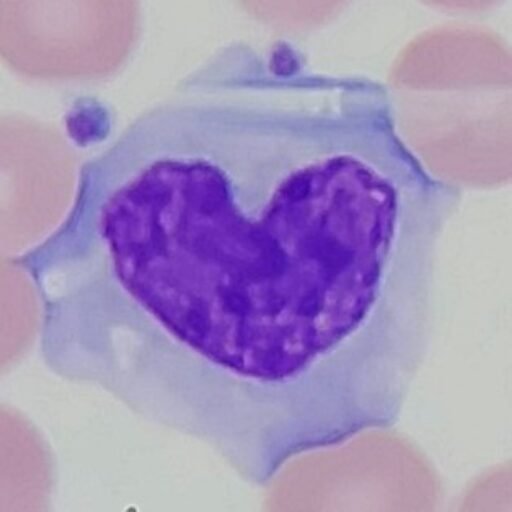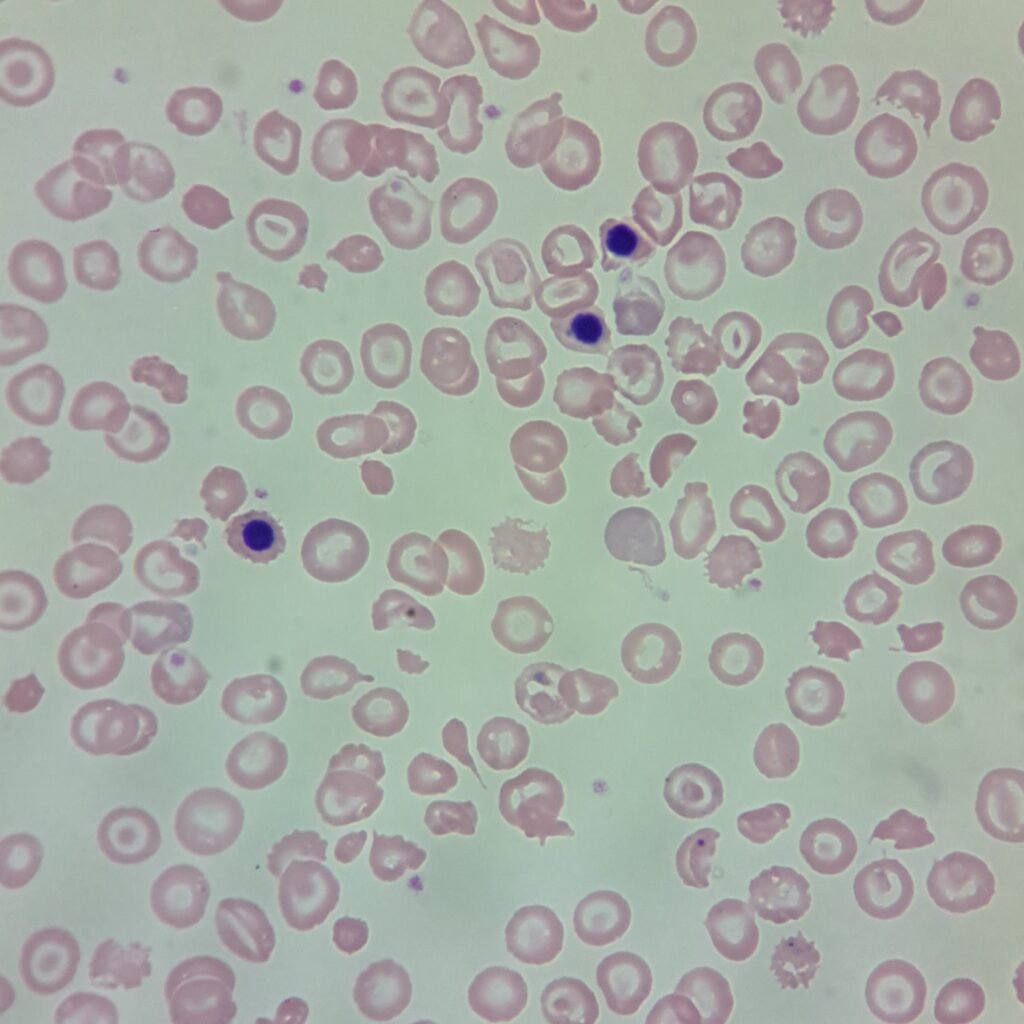Red Blood Cell Lineage
Overall, the size of an erythrocyte decreases as it matures. Chromatin becomes more coarse and clumped as it becomes less transcriptionally active. The cytoplasm will also become pinker with more Hemoglobin being formed and less blue due to decreased RNA. The nucleus will shrink in size until it is ejected and becomes a reticulocyte.
Pronormoblast (rubriblast)
Cytoplasm is deep blue with perinuclear hof. Nucleoli present.
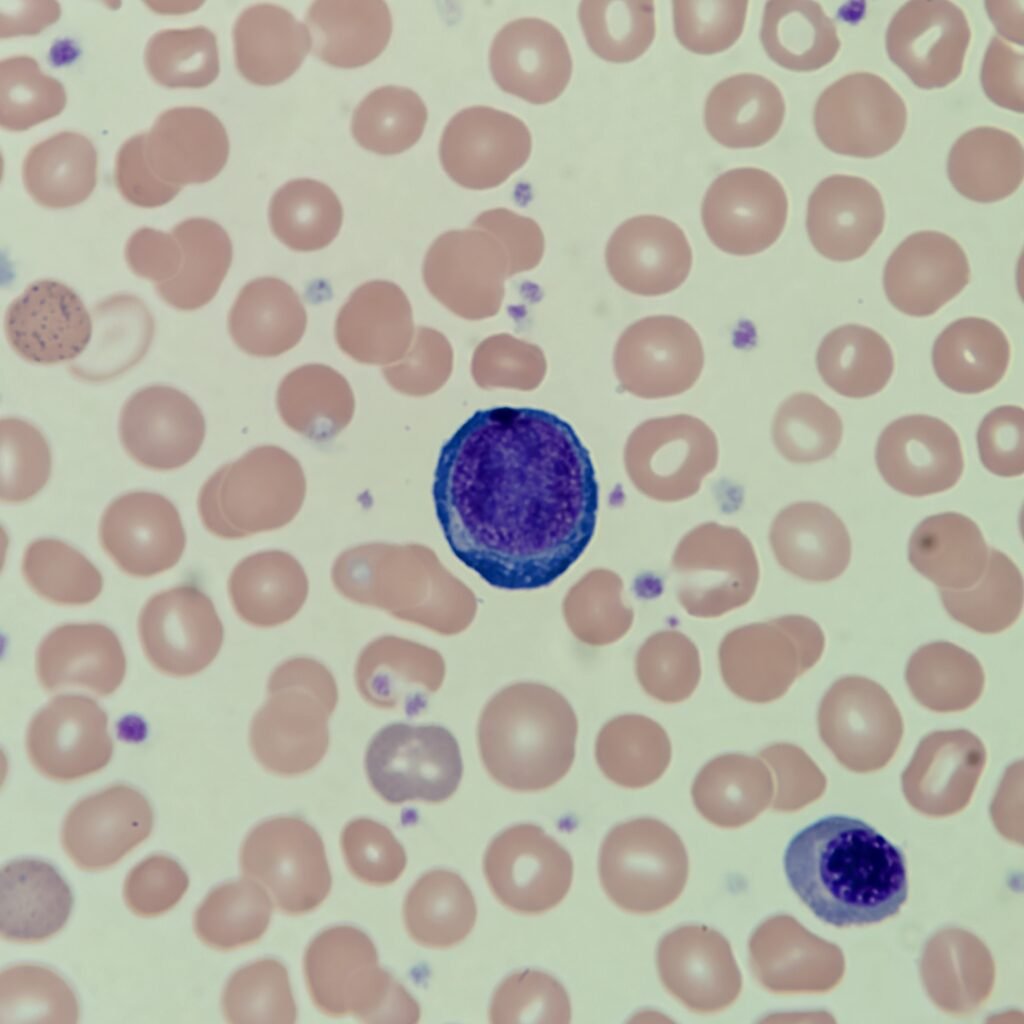
Basophilic Normoblast (Prorubricyte)
Cytoplasm is deep blue and may have perinuclear hof. Nucleoli usually not present.
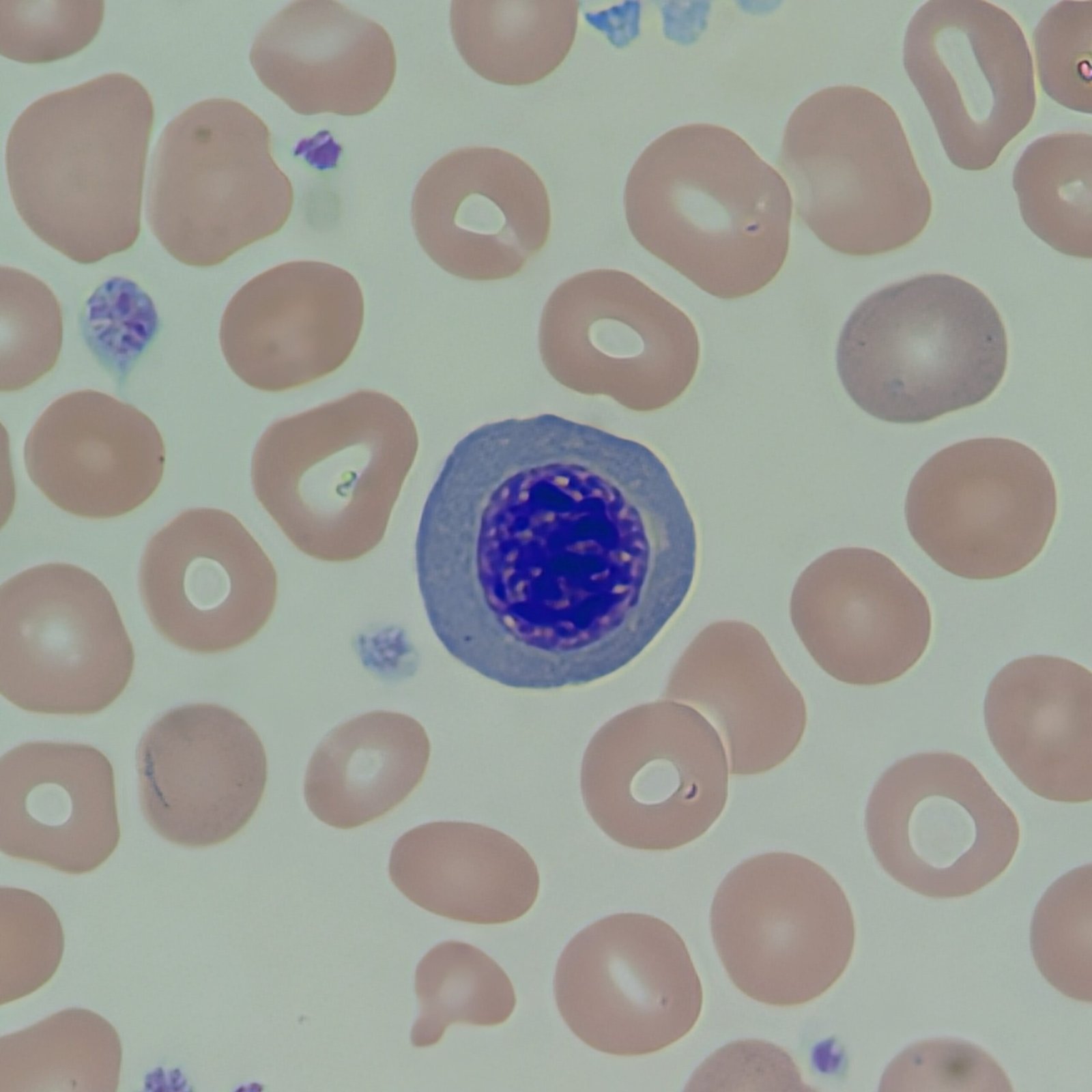
More Images


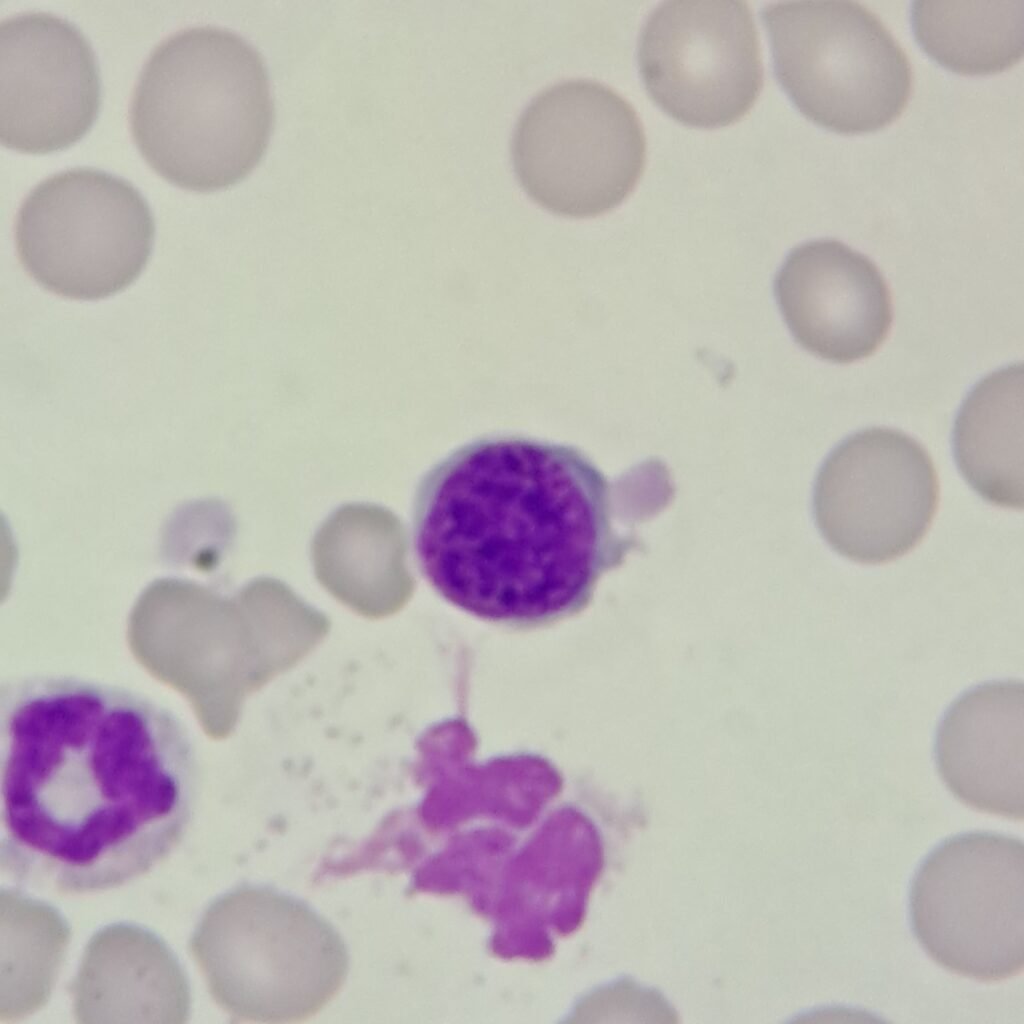
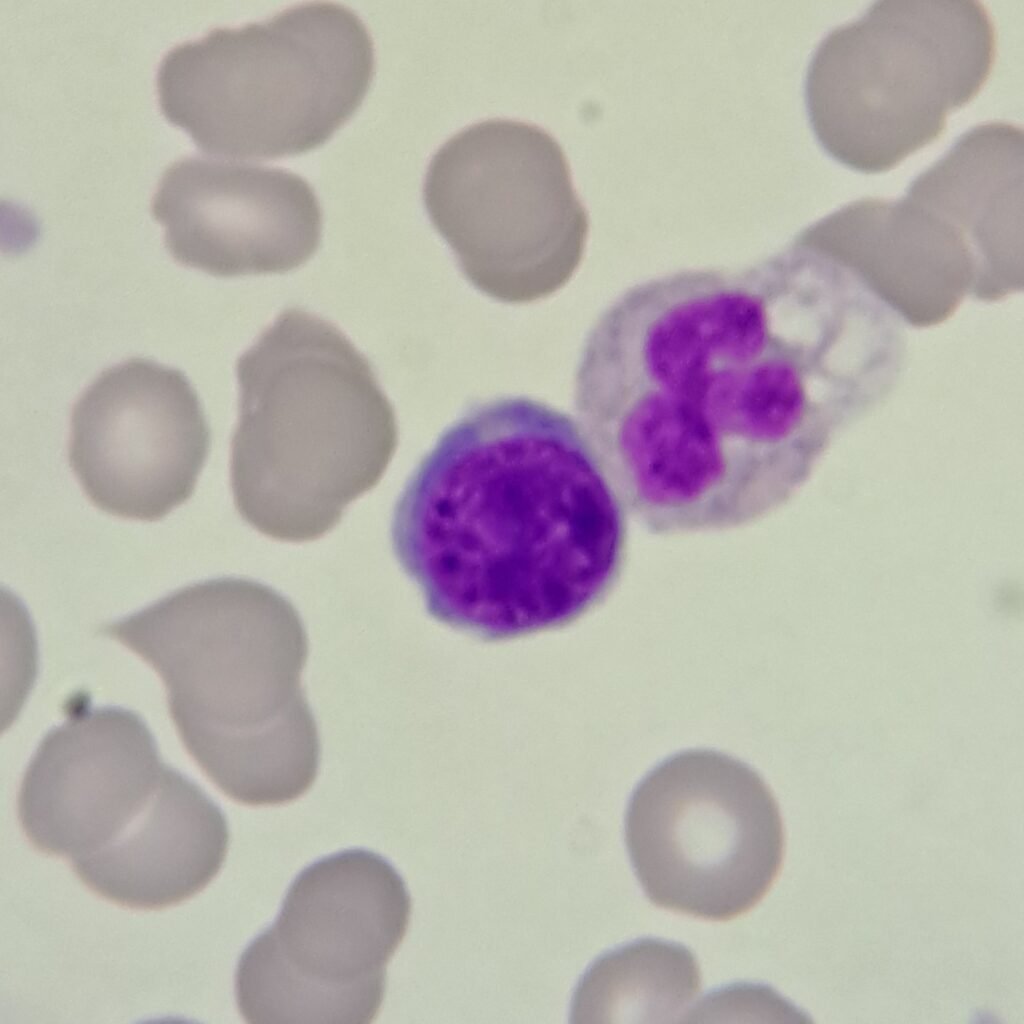
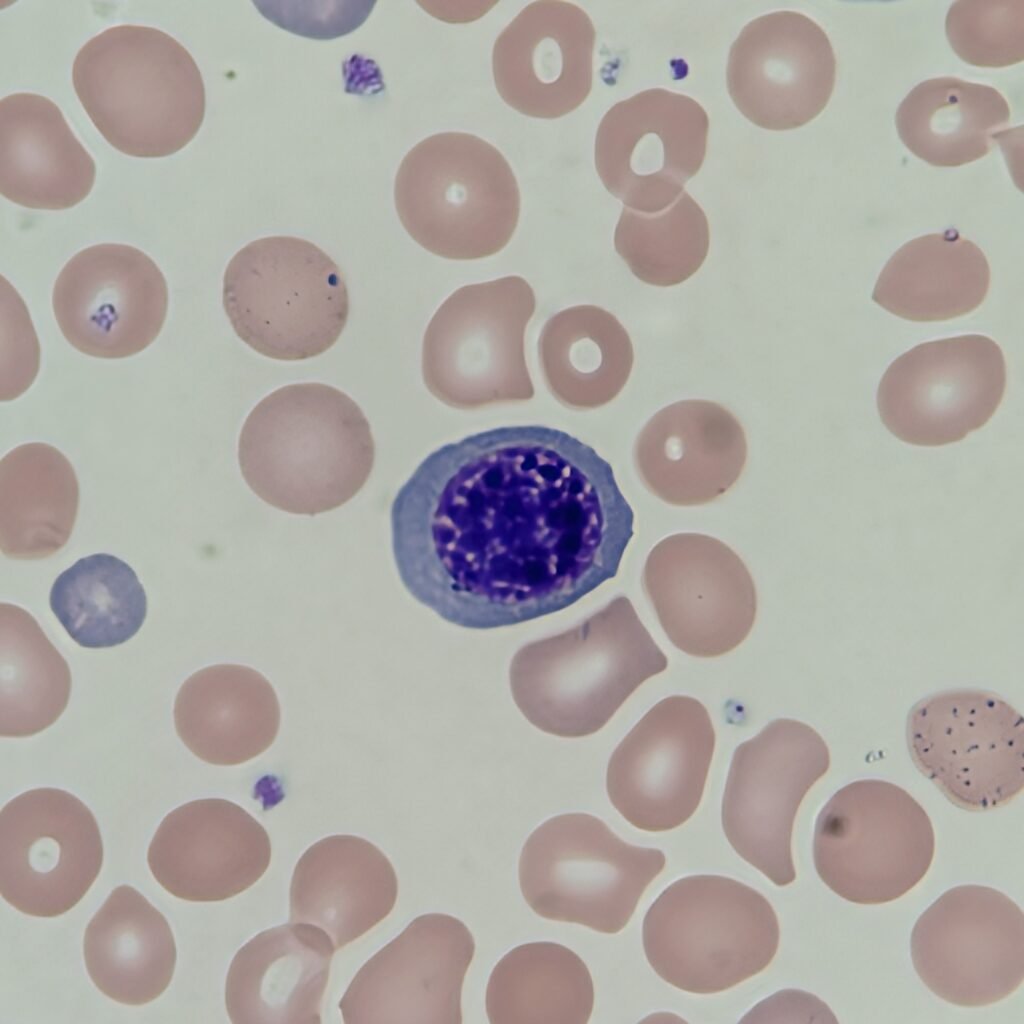
Polychromatophilic Normoblast (Rubricyte)
Nucleus is smaller than precursors with much clumpier chromatin forming cartwheel or checkerboard appearance. Cytoplasm is bluish-gray or pinkish-gray.

More Images




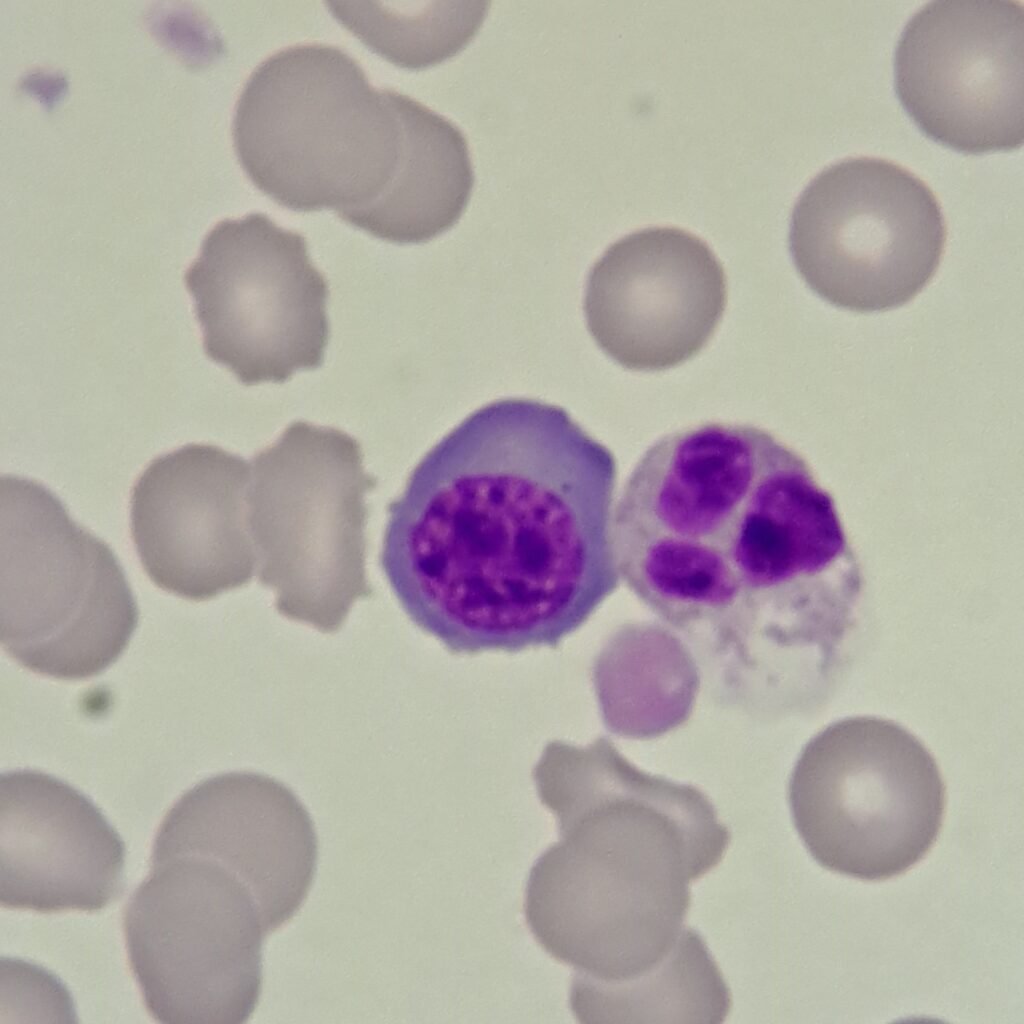
Orthochromatic Normoblast (Metarubricyte)
Last stage before losing nucleus. Nucleus is fully condensed, staining densely blue/purple. Pink cytoplasm can help differentiate an NRBC from a lymphocyte.

More Images

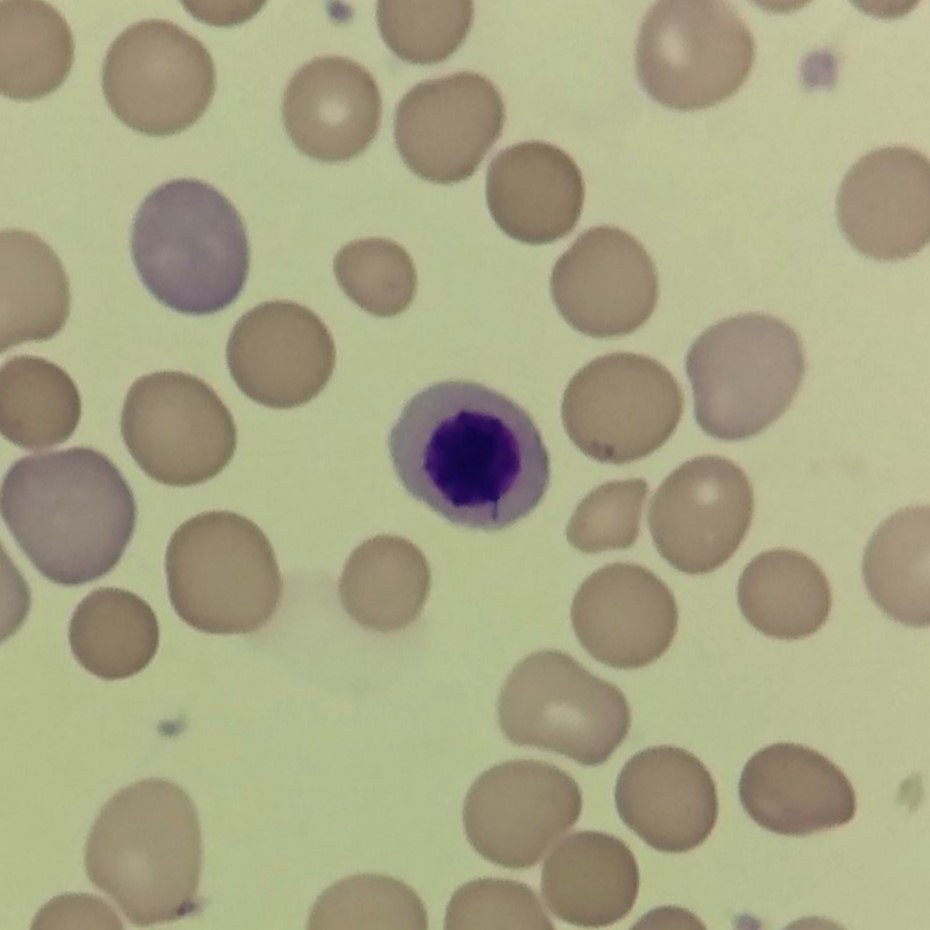
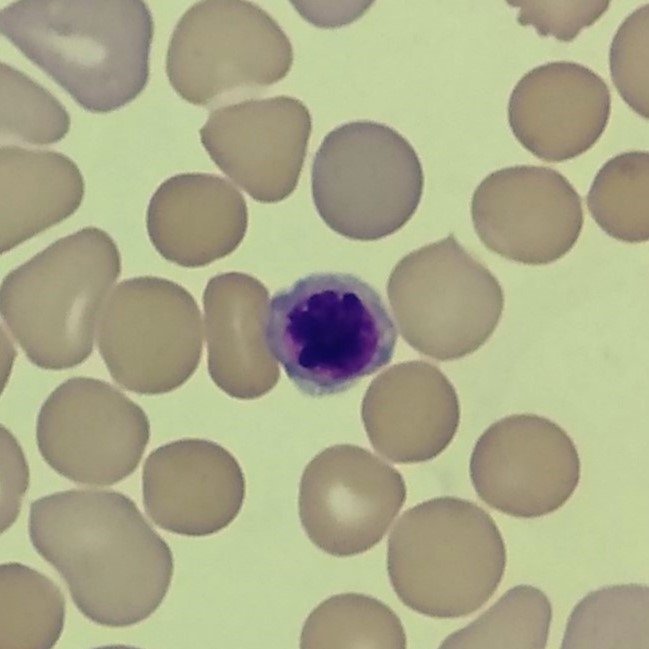
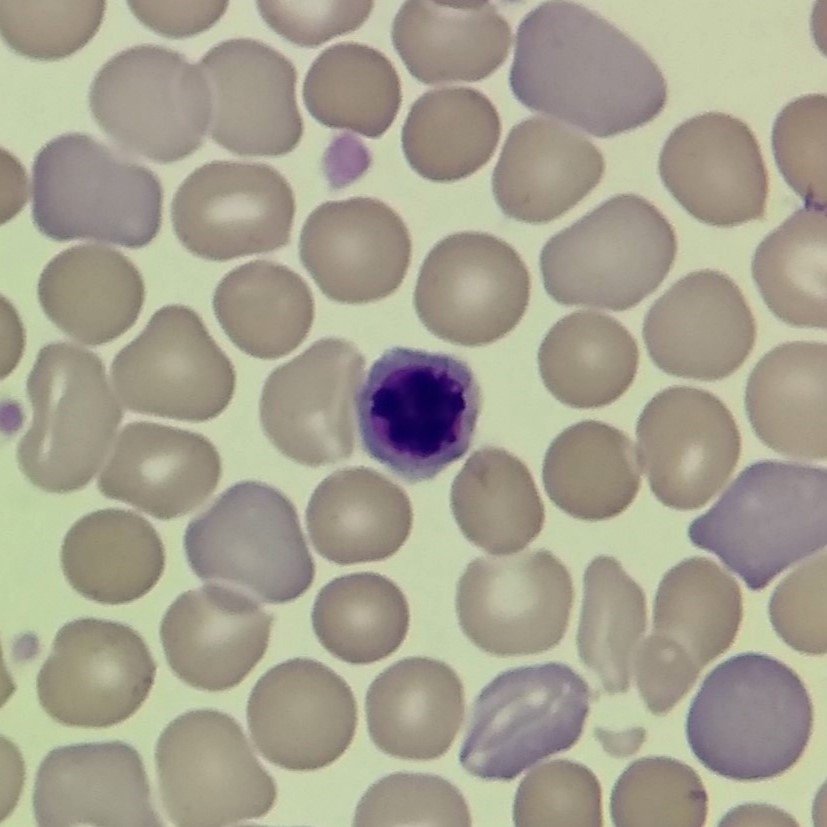
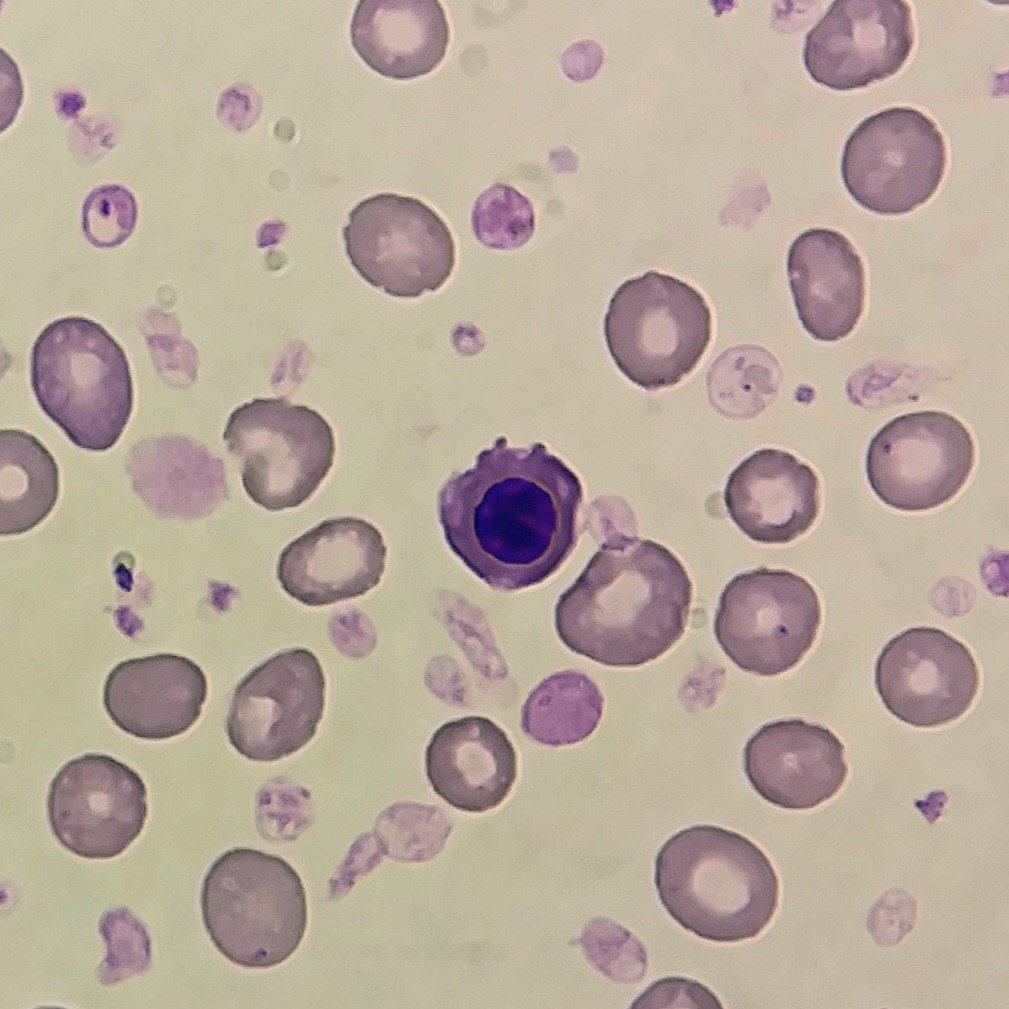
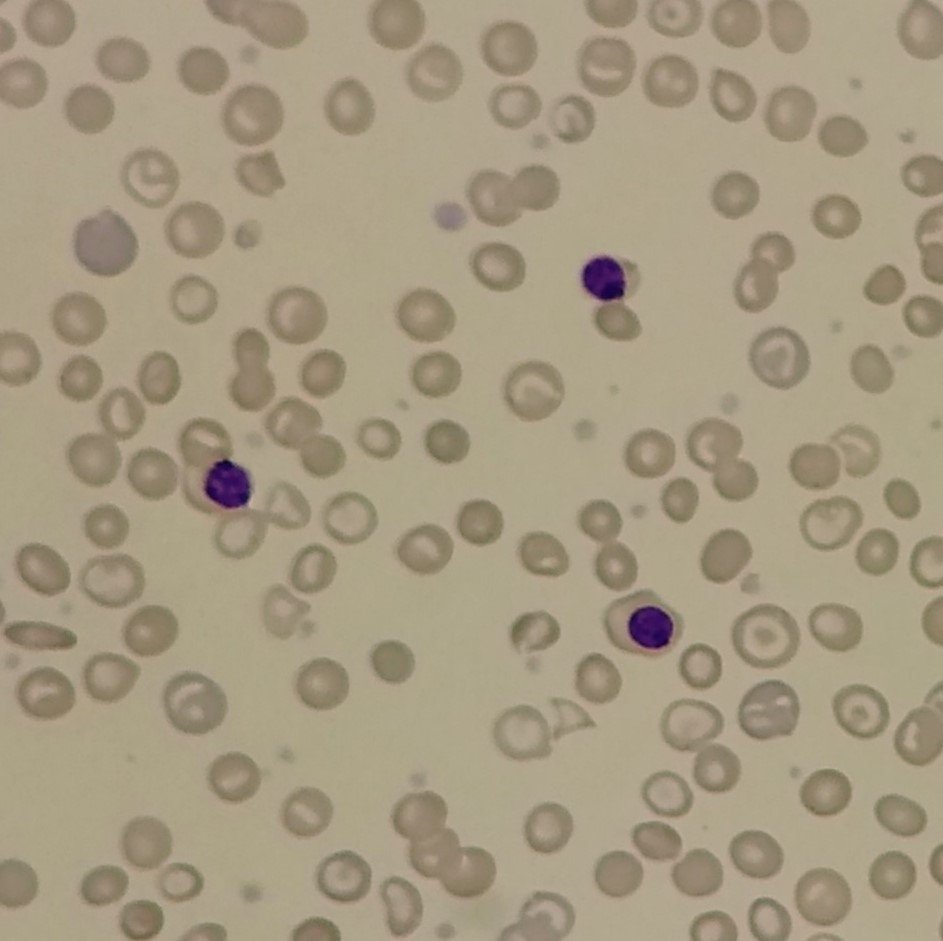
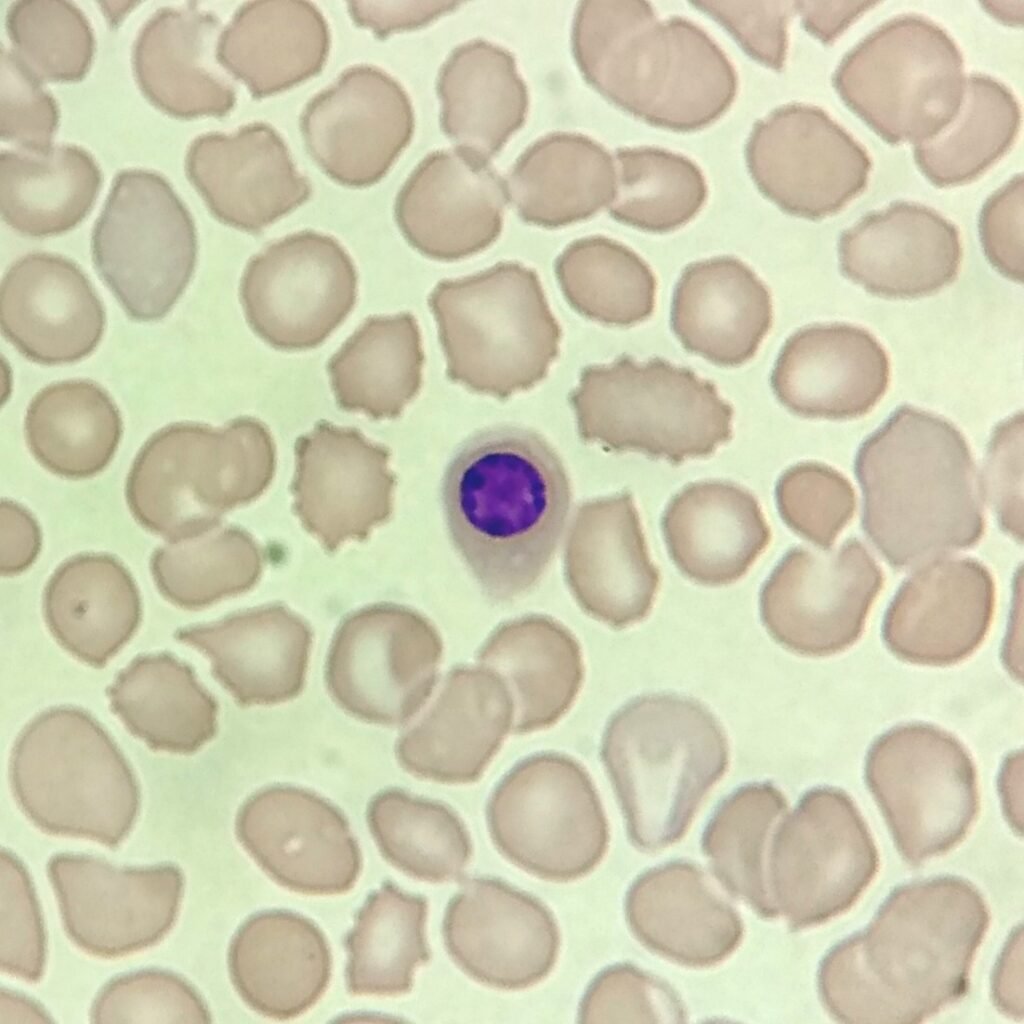
Polychromatophilic Erythrocyte (Reticulocyte)
Nucleus is absent. Cytoplasm is blue-tinged. Cell is slightly larger than fully mature RBC. Can be identified with New Methylene Blue Stain. Residual RNA may cause very fine dust-like stippling.

For more images, see Polychromasia
Mature Erythrocyte
Cytoplasm is pink with zone of central pallor. Cell is about the size of a lymphocyte nucleus.
For more images, see RBC Morphology
